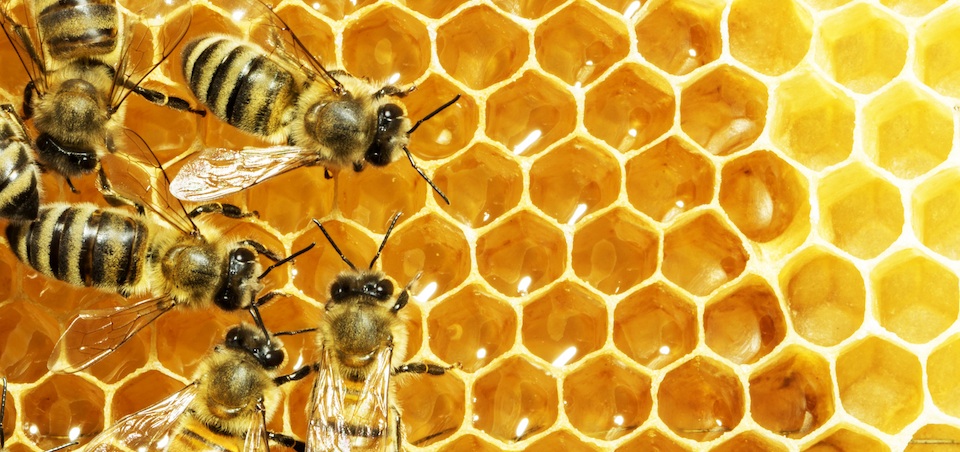Professor Dave Goulson is a UK biologist who specializes in bees. He has published over 200 scientific articles on the ecology of bees and other insects, and is the author of Bumblebees: Their behaviour, ecology and conservation (2010, Oxford University Press) and A Sting in the Tale (2013, Jonathan Cape), a popular science book about bumblebees.
Professor Dave Goulson is a UK biologist who specializes in bees. He has published over 200 scientific articles on the ecology of bees and other insects, and is the author of Bumblebees: Their behaviour, ecology and conservation (2010, Oxford University Press) and A Sting in the Tale (2013, Jonathan Cape), a popular science book about bumblebees.
In 2010 he was BBSRC “Social Innovator of the Year” and in 2013 he won the Marsh Award for Conservation Biology from the Zoological Society of London. In 2006 he founded the Bumblebee Conservation Trust, a charity devoted to reversing bumblebee declines.
We spoke to Goulson recently to get the scoop on all this buzz about neonicotinoids.
A\J: George Monbiot, who quotes your work in his blog, says that the EU ban is not comprehensive or meaningful – that only a few kinds of neonicotinoids will be banned and that the class of pesticides as a whole will continue to be used widely.
DG: It’s not a complete ban at all. It’s only two years, so it’s temporary, it applies only to seed dressing on flowering crops, so canola, corn, sunflowers, and only the drilling of seed-treated crops in the spring and summer when bees are flying because of the dust that’s created that leads to fairly swift death for bees. It does not apply to foliar sprays on fruit and vegetables, garden use, or to seed dressings on winter wheat, which is a big crop in Europe that is drilled in the autumn. But lots of them will still be used and, given their persistence in soil, there will be lots swilling around. And even if there were a total ban for two years, because of their persistence I wouldn’t expect bee populations to be bouncing back as a result. It would take many years for these compounds to be removed from the soil.
A\J: My research on this issue indicates that bees are only one factor – that many other invertebrates and birds are threatened by these chemicals. Is part of the problem that services provided by bees can be fairly easily quantified in economic terms? Is this focus on bees at the expense of the bigger picture?
DG: I would agree completely. One of the reasons you highlight is that bees get all the attention because everyone understands that they are important, but fewer people understand the importance of worms, earwigs, etc. The second thing is that beekeepers notice when their bees die. But wild organisms have no one to look after them and no one to notice if they are having problems. The first people to notice the effects of neonicotinoids were French beekeepers back in the 1990s. But there are lots of insects in the environment that we don’t want to be killed that are also being exposed. This can be through build up in soil and water, and the pesticides can be drawn up by non-crop roots. There is every reason to suspect that the effects are much, much broader than just bees, be we have no good monitoring programs for these other organisms.
A\J: Do we have a handle on how effective neonics are at increasing crop yields? Can it be quantified?
DG: This is the most interesting thing of all. There is no doubt we need farming; we need to produce sufficient food efficiently. If these pesticides were vital to farming we might just have to accept bee kills. The irony is that there is no evidence that they are effective. Pest management in farming is not based on evidence; it’s not based on field trials. Recently there have been a few studies from the US on soybeans that found no effect on yields whatsoever. Farmers are paying good money for seed treatments that don’t benefit them in any way. There is a fundamental problem with the system, in my view, which is that most agronomic advice to farmers comes from people who work for agrichemical companies. So it’s hardly surprising that they are recommending farmers use lots of agrichemicals. And it seems as if some of the ones they are recommending aren’t doing anything. It might sound a bit crazy, but look at it this way – we all buy things that we don’t need all the time: cosmetics that don’t do anything, vitamin supplements that don’t do anything, and so on. We are all easily convinced to buy things we don’t need and farmers have no other source of information. They can’t choose not to use these chemicals anyway, because it’s impossible to get untreated seed at present, so they don’t even have a choice. They are forced to pay for something that doesn’t work, which I think is pretty outrageous and I think if farmers knew that, they might well be quite unhappy.
A\J: Are you saying that after getting their education, most agronomists end up working for agrichemical companies?
DG: I’m not an expert on the Canadian system, but I can tell you that in the UK, 80 per cent of agronomists work directly for agrichemical companies and I believe the situation is similar here.
A\J: If corn, soy and canola farmers are prevented from using neonics, what alternatives will they have? Will these be more harmful?
DG: The first response to this is whether they need an alternative at all. If these chemicals aren’t benefiting their yield, then clearly they don’t need to be replaced with anything. IF one makes the assumption that for someone, somewhere, neonics are providing some small benefit, although there’s no evidence for this, then farmers might want to use something else. They won’t go back to using organophosphates as they have been banned. It’s more likely that farmers might increase their use of pyrethroids slightly, which are being used currently anyway – most seeds treated with neonics are also sprayed with pyrethroids. So that’s the worst-case scenario. Now, pyrethroids do kill bees, they are an insecticide, but they do have a big advantage from a bee’s perspective in that they don’t persist in the environment for longer than a few days. So beekeepers can shut their hives or take them away for a few days, while neonics are in the environment 365 days a year.
A\J: One of our bloggers has suggested that it’s time to rethink they way we practice agriculture – that enormous monocultures are extremely hard on soil, water, wildlife and humans. Are you able to comment on that?
DG: I would say that modern agriculture is probably not sustainable in the long term globally. We are losing absurd amounts of soil from repeatedly plowing in parts of the world where winds or heavy rains can wash it away. We are using up underground aquifers in some of the more arid parts of the world; we have problems of salinization in some parts of the world. We are reducing the ability of the planet to produce food globally. We do need to rethink the ways we are producing food.
A\J: John Bennett of Sierra Club Canada has noted that western Canada hasn’t seen the same die off as we in eastern and central Canada have. He wonders if it might be the difference between corn and canola production. Do you have any insight on that?
DG: I don’t know the details on that, but I’ve heard the same arguments. Application of neonics on canola is much lower than on corn. But the problems for bees are not just pesticides. Bees have been suffering for many decades because there aren’t many flowers left. Modern farming doesn’t leave room for anything but the crop. This applies more to wild bees than to honeybees, but they’ve all undergone a 70-year decline due to lack of food. On top of that we’ve accidentally introduced disease and parasites, and now we’re poisoning them. It’s this combination of stressors that’s at the heart of the problem. Bees could cope with one of them, or maybe two, but if you throw three or more factors at them they get into trouble. So maybe there are fewer stressors in the west or they exist in different combination. It may also come down to the application rate of the pesticides. I have heard that this may be exaggerated, that western bees are not as healthy as they are made out to be, but I don’t have any figures on that.
A\J: Do you have a take away message for us?
DG: I’m always really keen to get people to not just talk about honeybees. Pollination is done by a whole load of different insects and they are all really important and all need looking after. Bees have their champions, but all organisms need to be protected.
Janet Kimantas is associate editor at A\J with degrees in studio art and environmental studies. She is currently pursuing an MES at UWaterloo. She splits her spare time between walking in the forest and painting Renaissance-inspired portraits of birds.













